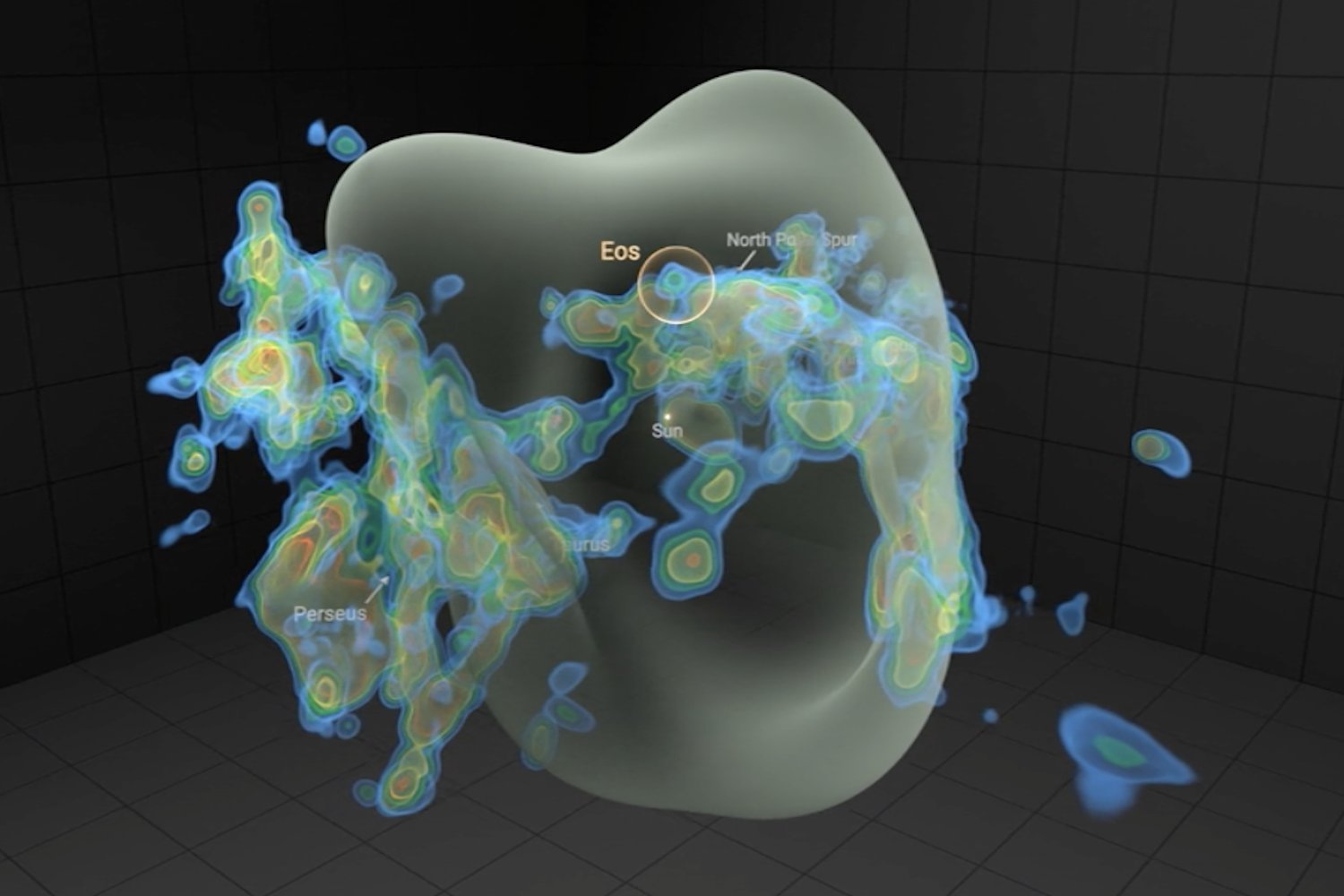Introduction to Star Formation
The process of star formation initiates within vast, cold clouds of gas and dust, which ultimately succumb to the forces of gravity and collapse. These molecular clouds are expansive cosmic entities that can stretch for hundreds of light-years. Recently, scientists have identified a massive molecular cloud in our celestial vicinity.
Discovery of the Eos Cloud
The discovered cloud, named Eos after the Greek goddess of dawn, is located approximately 300 light-years away from our solar system. It is one of the largest single structures observable in the sky and may be the closest molecular cloud to Earth, as detailed in a paper published in Nature Astronomy. Due to its proximity, Eos offers astronomers a unique opportunity to observe the star-forming process and the molecular universe in unprecedented detail.
Observational Methods
Stellar nurseries in our galactic neighborhood are typically found along the surface of the Local Bubble, a large, hot cavity of plasma surrounded by a shell of gas and dust. Scientists have traditionally relied on observations of dust emissions to locate molecular clouds within this bubble. However, the discovery of Eos was made possible by detecting the fluorescent nature of hydrogen in the far-ultraviolet realm of the electromagnetic spectrum, as outlined in the paper.
Breakthrough in Detection Methods
According to Blakesley Burkhart, a physics and astronomy professor at the Rutgers School of Arts and Sciences and lead author of the study, "This is the first-ever molecular cloud discovered by looking for far ultraviolet emission of molecular hydrogen directly." Molecular hydrogen, composed of two hydrogen atoms, is the most abundant molecule in the universe but is challenging to detect due to its emission in far ultraviolet wavelengths that are absorbed by Earth’s atmosphere. Burkhart added, "The data showed glowing hydrogen molecules detected via fluorescence in the far ultraviolet. This cloud is literally glowing in the dark."
Characteristics of Eos
Eos is characterized by its crescent shape and is situated on the edge of the Local Bubble. It spans an apparent size of 40 full Moons in the sky and has a mass approximately 3,400 times that of the Sun. The technique used to reveal Eos could potentially be employed to discover more hidden clouds across the Milky Way galaxy.
Implications for Understanding Star Formation
Burkhart emphasized, "When we look through our telescopes, we catch whole solar systems in the act of forming, but we don’t know in detail how that happens." The discovery of Eos is significant because it allows for direct measurement of how molecular clouds form and dissociate, as well as how a galaxy transforms interstellar gas and dust into stars and planets. This breakthrough offers new insights into the process of star formation and the evolution of our galaxy.
Source Link





